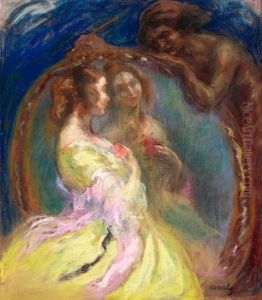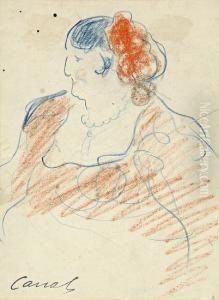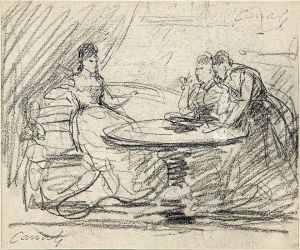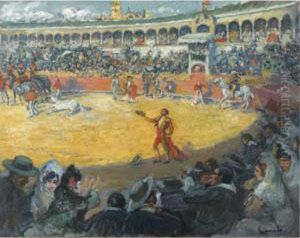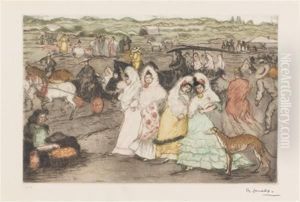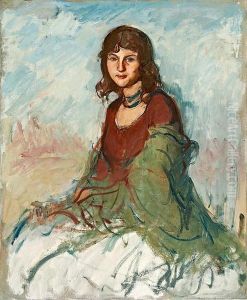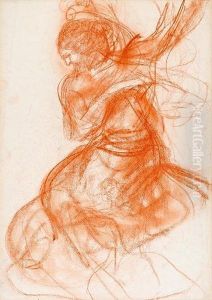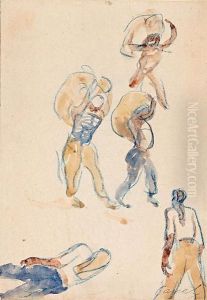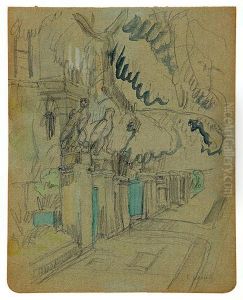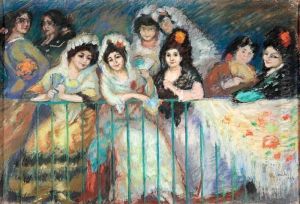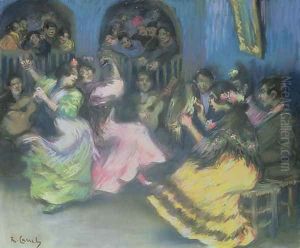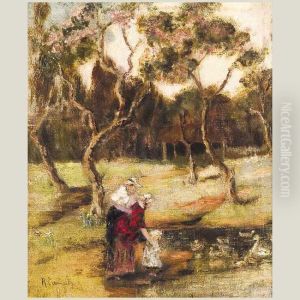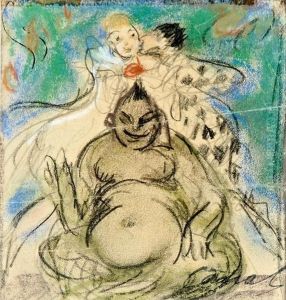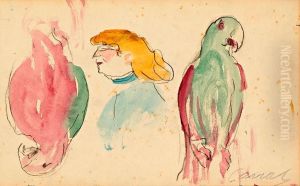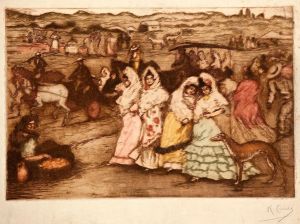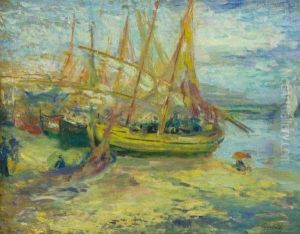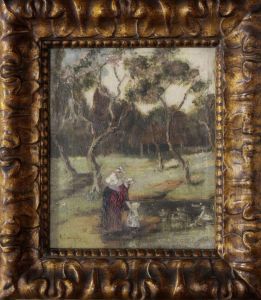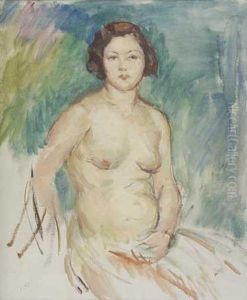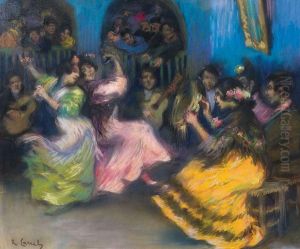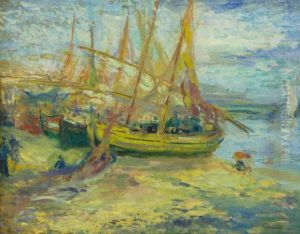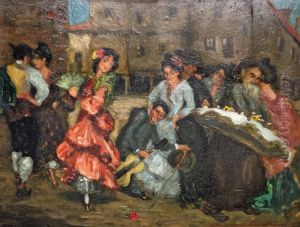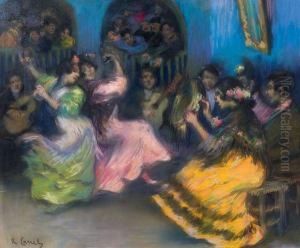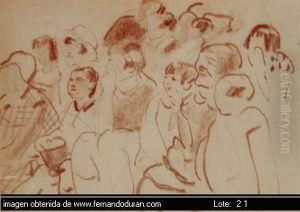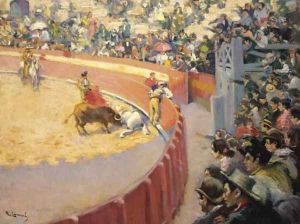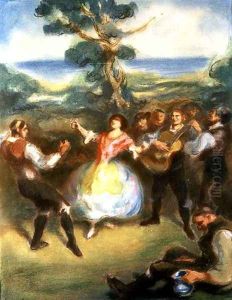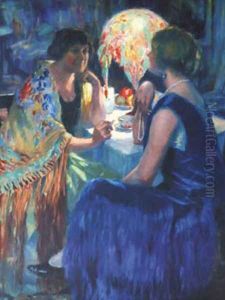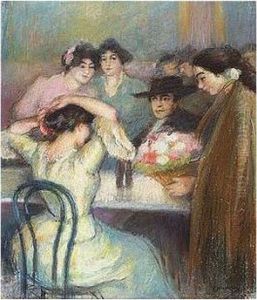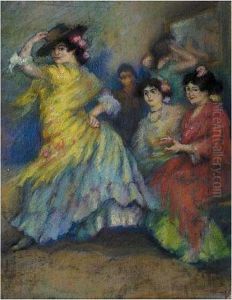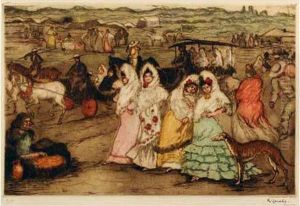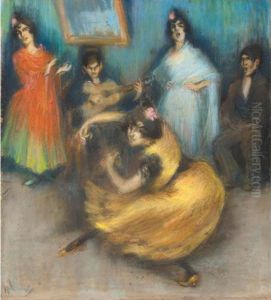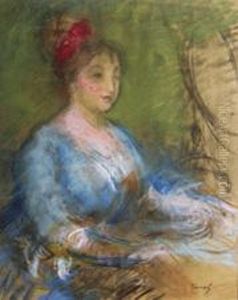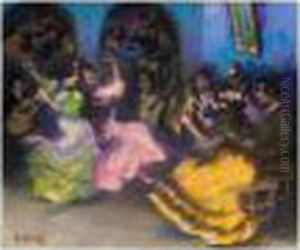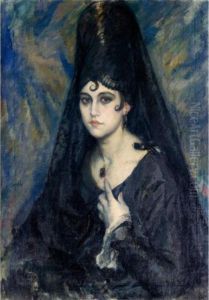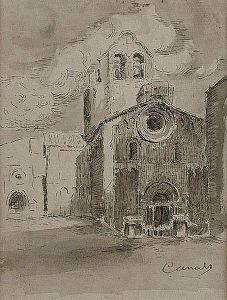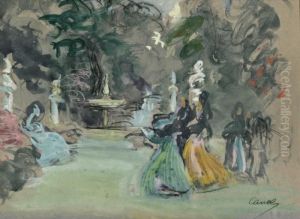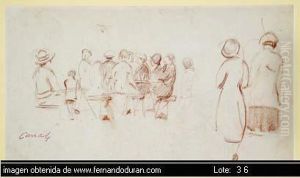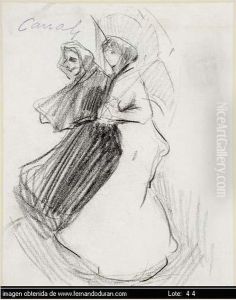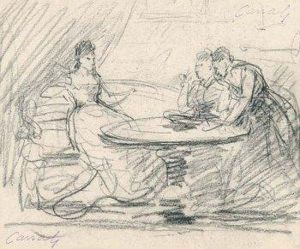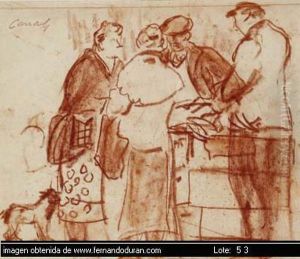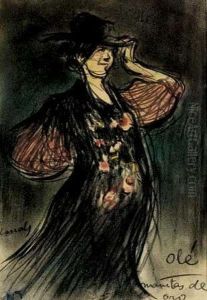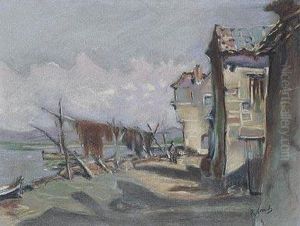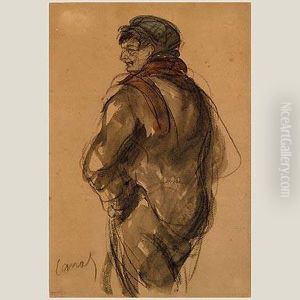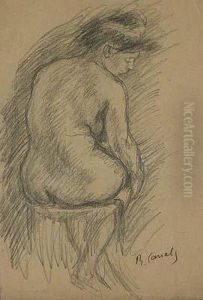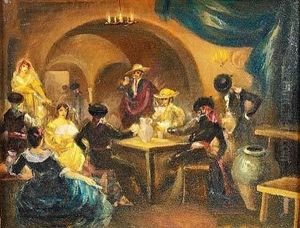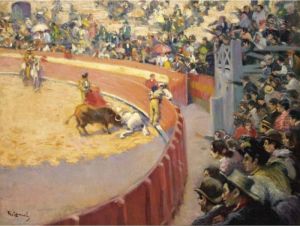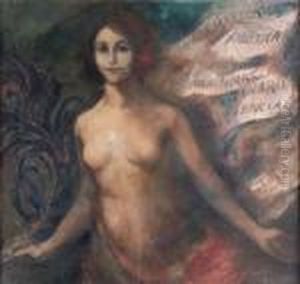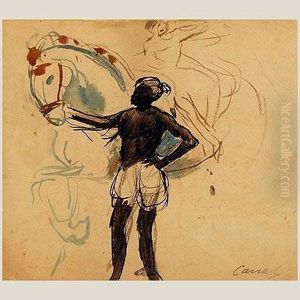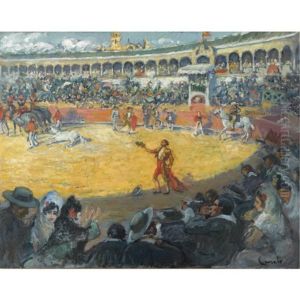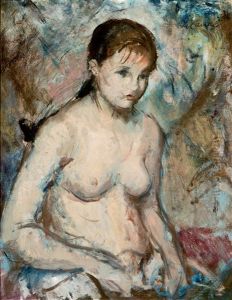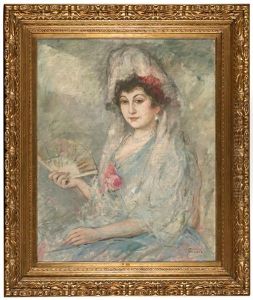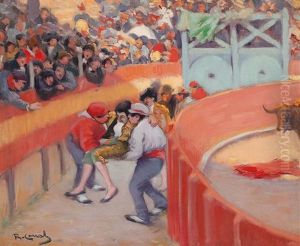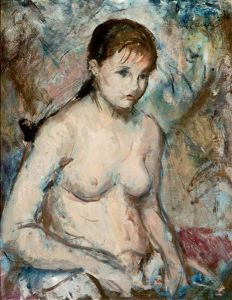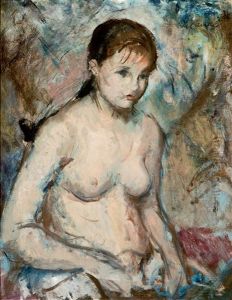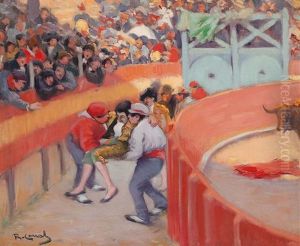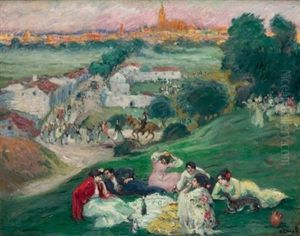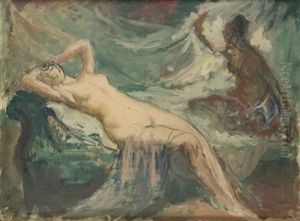Ricardo Canals y Llambi Paintings
Ricardo Canals y Llambi was a Spanish painter known for his contribution to both Catalan and Spanish art. Born on February 24, 1876, in Valencia, Spain, Canals moved to Barcelona where he became part of the vibrant artistic scene at the turn of the 20th century. He studied at La Llotja, the prestigious School of Fine Arts in Barcelona, where he was influenced by the works of the Spanish Old Masters as well as contemporary trends in European art.
Canals was associated with the Modernisme movement, the Catalan equivalent of Art Nouveau, although his work also showed the influence of Impressionism and Realism. During his career, he painted portraits, landscapes, genre scenes, and also worked on decorative projects. His style was characterized by a delicate use of color, attention to detail, and a keen interest in capturing light and atmosphere.
In 1897, Canals exhibited his work in Barcelona, garnering positive recognition. He traveled to Paris in 1898, where he came into contact with the avant-garde circles, further enriching his artistic outlook. While in Paris, he exhibited at the Salon and was influenced by French artists, which helped in refining his style.
He returned to Barcelona in 1901, where he continued to develop his career, becoming a respected member of the artistic community. Canals also participated in numerous exhibitions both in Spain and abroad, including the Venice Biennale. His work received awards and was acquired by collectors and institutions, reflecting his success as an artist.
Ricardo Canals y Llambi's work is often noted for its elegance and the ability to capture the zeitgeist of the Belle Époque. He painted a number of prominent figures of his time and also contributed to the illustration of books and periodicals, showing his versatility as an artist.
Sadly, Canals' career was cut short by his untimely death on July 7, 1931, in Barcelona. Despite his relatively short life, his artwork left a lasting impact on Catalan art history. Today, his works are displayed in various museums and galleries, where they continue to be appreciated for their historical and artistic value.
